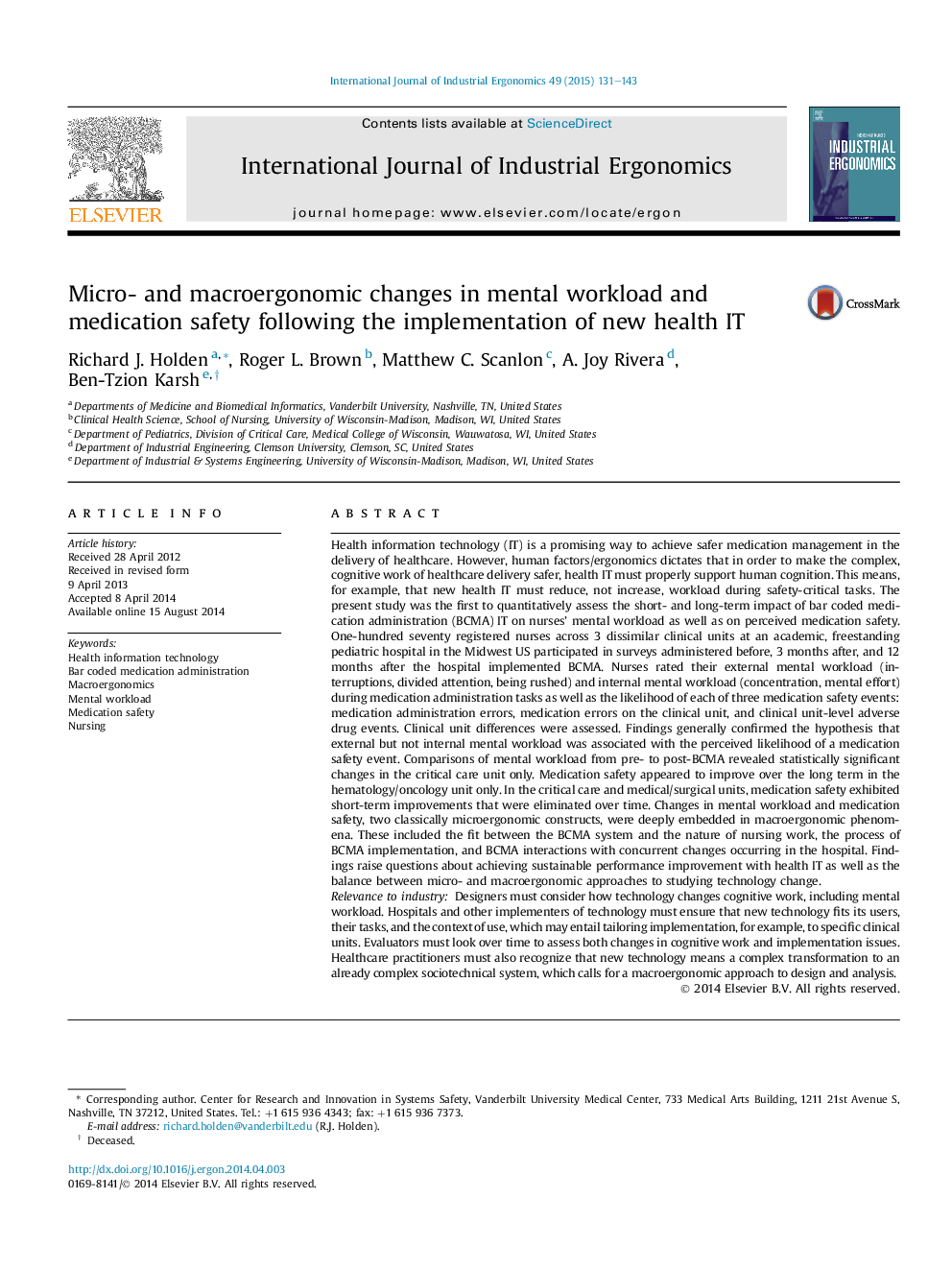| کد مقاله | کد نشریه | سال انتشار | مقاله انگلیسی | نسخه تمام متن |
|---|---|---|---|---|
| 1095959 | 1487426 | 2015 | 13 صفحه PDF | دانلود رایگان |
• As hypothesized, external mental workload was associated with medication safety.
• As hypothesized, internal mental workload was not associated with medication safety.
• Mental workload changed post-IT but mostly in the critical care nursing unit.
• Medication safety initially improved but was sustained in only the cancer unit.
• Microergonomic changes were embedded in and inseparable from macroergonomic changes.
Health information technology (IT) is a promising way to achieve safer medication management in the delivery of healthcare. However, human factors/ergonomics dictates that in order to make the complex, cognitive work of healthcare delivery safer, health IT must properly support human cognition. This means, for example, that new health IT must reduce, not increase, workload during safety-critical tasks. The present study was the first to quantitatively assess the short- and long-term impact of bar coded medication administration (BCMA) IT on nurses' mental workload as well as on perceived medication safety. One-hundred seventy registered nurses across 3 dissimilar clinical units at an academic, freestanding pediatric hospital in the Midwest US participated in surveys administered before, 3 months after, and 12 months after the hospital implemented BCMA. Nurses rated their external mental workload (interruptions, divided attention, being rushed) and internal mental workload (concentration, mental effort) during medication administration tasks as well as the likelihood of each of three medication safety events: medication administration errors, medication errors on the clinical unit, and clinical unit-level adverse drug events. Clinical unit differences were assessed. Findings generally confirmed the hypothesis that external but not internal mental workload was associated with the perceived likelihood of a medication safety event. Comparisons of mental workload from pre- to post-BCMA revealed statistically significant changes in the critical care unit only. Medication safety appeared to improve over the long term in the hematology/oncology unit only. In the critical care and medical/surgical units, medication safety exhibited short-term improvements that were eliminated over time. Changes in mental workload and medication safety, two classically microergonomic constructs, were deeply embedded in macroergonomic phenomena. These included the fit between the BCMA system and the nature of nursing work, the process of BCMA implementation, and BCMA interactions with concurrent changes occurring in the hospital. Findings raise questions about achieving sustainable performance improvement with health IT as well as the balance between micro- and macroergonomic approaches to studying technology change.Relevance to industryDesigners must consider how technology changes cognitive work, including mental workload. Hospitals and other implementers of technology must ensure that new technology fits its users, their tasks, and the context of use, which may entail tailoring implementation, for example, to specific clinical units. Evaluators must look over time to assess both changes in cognitive work and implementation issues. Healthcare practitioners must also recognize that new technology means a complex transformation to an already complex sociotechnical system, which calls for a macroergonomic approach to design and analysis.
Journal: International Journal of Industrial Ergonomics - Volume 49, September 2015, Pages 131–143
